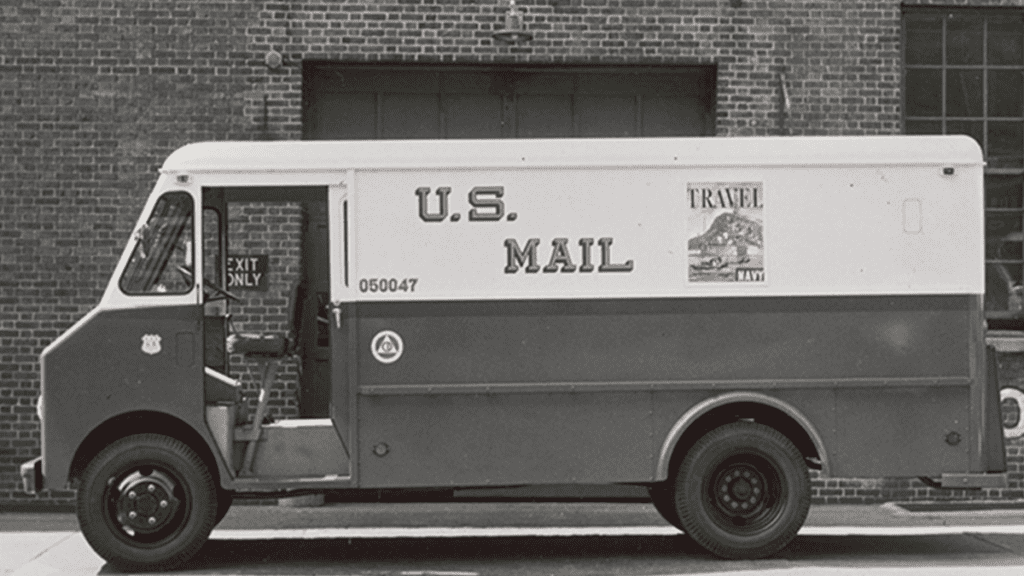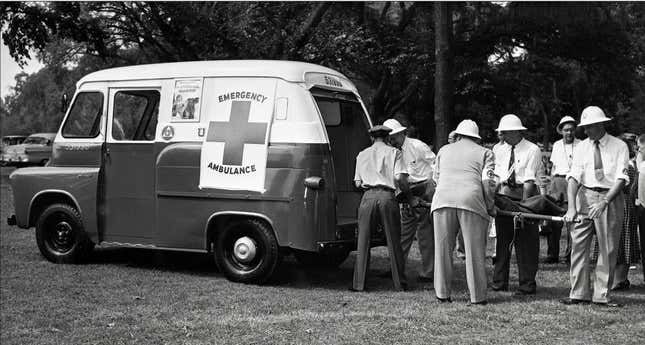Inside The Cold War Plan To Use Postal Trucks To Pick Up Nuclear Attack Victims

Nothing stops the United States Postal Service, not even nuclear fallout. Following the first successful nuclear weapons test conducted by the Soviet Union in August of 1949, the U.S. government was forced to prepare for the worst. It was an all-hands-on-deck situation involving every federal department and agency, and the post office was more involved than you might think. The Federal Civil Defense Act of 1950 pushed the USPS to set up fallout shelters, operate emergency transportation of wounded and deceased, and help ameliorate the damage of nuclear attack. Your friendly neighborhood mail delivery person suddenly became an officer of civil defense.
‘Twister’ Remains The Greatest Car Commercial Of All Time
On the truck above you’ll see a small triangle insignia with the letters CD scribed inside. This decal was carried on thousands of postal trucks from 1956 until 1971. The decal stated “This is a unit of your civil defense” and each vehicle carrying the decal was expected to operate as emergency ambulance, rescue vehicle, or mass transportation in the event of a Soviet attack. After 1964, this program even included the three-wheeled “Mailster” vehicles.
Image: USPS
The U.S. Postal Service currently employs over 246,000 vehicles, among the largest civilian fleets in the world. That kind of transportation powerhouse could be an incredible resource in the event of tragedy.
One of the many Cold War-era plans was to move everyone in affected zones to refugee camps housed within the National Parks, as they would be less likely to be targets. Once you were transported to Yosemite or Yellowstone by mail truck and under the care of the National Park Service workers, USPS would issue a pre-printed emergency change of address postcard allowing you to register a refugee number. Even if your whole life got toppled, the mailperson could still bring your bills.

Image: USPS
If you couldn’t make it to a national park, survivors of Soviet aggression were invited to their local Post Office to act as an impromptu fallout shelter.
In total, in the early 1960s the U.S. Government bought and distributed about 165,000 tons of food and supplies, worth about $122 million, for use in fallout shelters throughout the country. By January 1969, 160 million fallout shelter spaces had been prepared, which the Department of Defense estimated might save 18 to 30 million people in the aftermath of a nuclear attack.
The buildings, typically large and robust brick buildings, were outfitted with rations, clean water, and Geiger counters. The government worked with Nabisco to develop high-calorie “survival biscuits,” which were also stocked at post offices for decades. The large 17.5 gallon clean water containers were capable of being converted into toilets as they were emptied.
The program wound down over the course of the 1970s, but wasn’t completely abandoned until the 1990s, when the Cold War finally came to an official end. The postal service has always been a major part of the country’s emergency plans, because it’s the only department that truly knows where everyone in the country lives.



